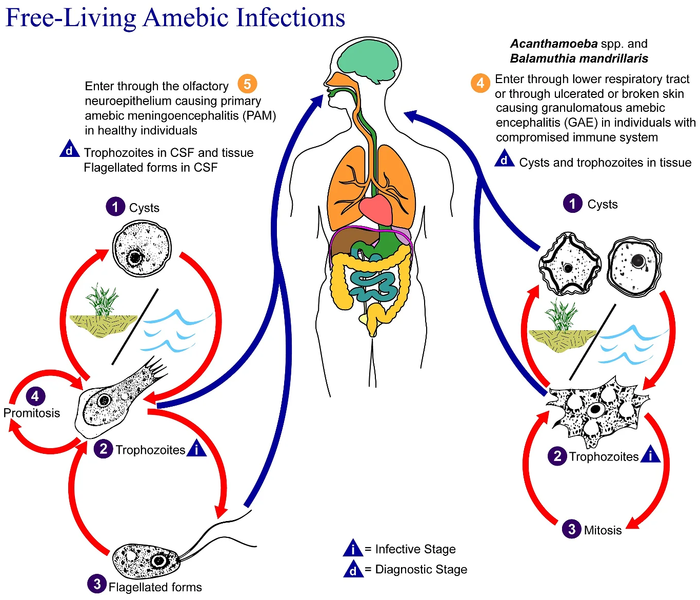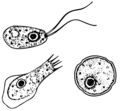Файл:Free-living amebic infections.png
Перейти до навігації
Перейти до пошуку

Розмір при попередньому перегляді: 700 × 600 пікселів. Інші роздільності: 280 × 240 пікселів | 560 × 480 пікселів | 896 × 768 пікселів | 1195 × 1024 пікселів | 1365 × 1170 пікселів.
Повна роздільність (1365 × 1170 пікселів, розмір файлу: 715 КБ, MIME-тип: image/png)
Історія файлу
Клацніть на дату/час, щоб переглянути, як тоді виглядав файл.
| Дата/час | Мініатюра | Розмір об'єкта | Користувач | Коментар | |
|---|---|---|---|---|---|
| поточний | 09:24, 2 лютого 2023 |  | 1365 × 1170 (715 КБ) | Materialscientist | https://answersingenesis.org/biology/microbiology/the-genesis-of-brain-eating-amoeba/ |
| 06:30, 20 липня 2008 |  | 518 × 435 (31 КБ) | Optigan13 | {{Information |Description={{en|This is an illustration of the life cycle of the parasitic agents responsible for causing “free-living” amebic infections. For a complete description of the life cycle of these parasites, select the link below the image |
Використання файлу
Нема сторінок, що використовують цей файл.
Глобальне використання файлу
Цей файл використовують такі інші вікі:
- Використання в de.wikibooks.org
- Використання в en.wiktionary.org
- Використання в fi.wikipedia.org
- Використання в fr.wikipedia.org
- Використання в gl.wikipedia.org
- Використання в hr.wikipedia.org
- Використання в is.wikipedia.org
- Використання в it.wikipedia.org
- Використання в pl.wikipedia.org
- Використання в te.wikipedia.org
- Використання в vi.wikipedia.org
- Використання в www.wikidata.org
- Використання в zh.wikipedia.org



